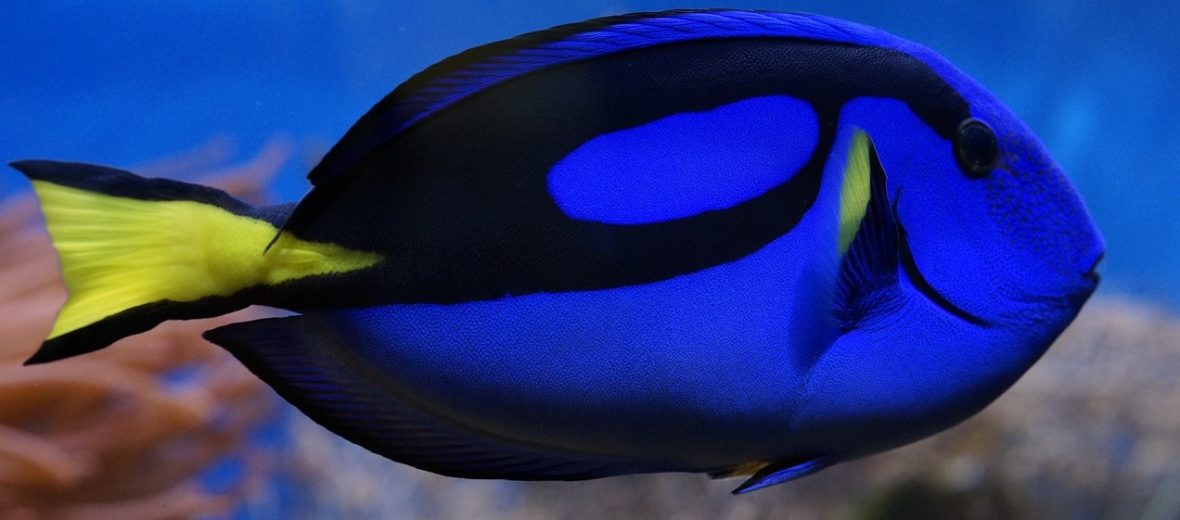
The surgeonfish, aka tang or doctorfish, can be found in various tropical reef habitats. There are approximately 75 known species of surgeonfishes. These fish are among the most popular in the marine aquarium hobby; much to their dismay. Surgeons can be challenging to keep in aquariums and thus they have a limited lifespan in said environment. Even though they are captured from the wild for the aquarium hobby, most surgeons are listed as Least Concern by the IUCN. Others are listed as Data Deficient. Their populations are, generally speaking, listed as decreasing. Besides capture, they also face the threats of pollution, climate change, and habitat destruction.
First the Stats…
Scientific name: Acanthuridae
Weight: Up to 1.3 lbs.
Length: Up to 12 inches
Lifespan: Up to 20 years
Now on to the Facts!
1.) Surgeonfish are called so due to their scalpel-like barbs located on each side of their caudal peduncle (the narrow part of the fish’s body between the posterior ends of the dorsal and anal fins and the base of the caudal fin – tail). These point forwards and are used in self defense.
2.) The common name, tang, is derived from the German “seetang,” which translates to “seaweed,” and is in reference to their diet of oceanic vegetation.
3.) The spines on these fishes can be mildly venomous. A stab from one of them can result in pain, redness, and swelling. But you won’t die. It’ll just hurt like heck for a while.
4.) Males are typically larger than females, thus making them sexually dimorphic.
5.) Generally speaking, these fish can be found at depths of up to 295 feet, but prefer shallower water.
But wait, there’s more on the surgeonfish!
6.) Surgeonfishes are generally on the aggressive side. This behavior is used to defend their territory and food source.
7.) Juveniles feed primarily on plankton. Whereas adults are omnivorous (eat plant and animal matter) and feed on both plankton as well as algae and various marine plants.
Did you know…?
Besides venomous barbs, certain tangs (like the famous blue tang) also possess toxins in their skin that can cause ciguatera. This is a food born illness that can cause abdominal pain and diarrhea.
8.) These fish are broadcast spawners. This is where the female will release her eggs into the water column and the males will fertilize said eggs.
9.) Females release up to 40,000 eggs.
10.) Eggs hatch in up to 24 hours.
But wait, there’s still more on the surgeonfish!
11.) Some surgeonfishes actually change their coloration as they age.
12.) The edges of their teeth are serrated, which helps them remove algae from hard surfaces.
13.) They can be seen as a solitary individual to dwelling in schools of 100s – 1000s of fish.
14.) Due to the popular film about the clownfish searching for his son, the blue tang (Paracanthurus hepatus) has been over collected for the pet trade. However, these fish are fortunately still listed as Least Concern… for now.
Now a Short Surgeonfish Video!
Be sure to share & comment below! Also, check out the Critter Science YouTube channel. Videos added regularly!
Want to suggest a critter for me to write about? Let me know here.



